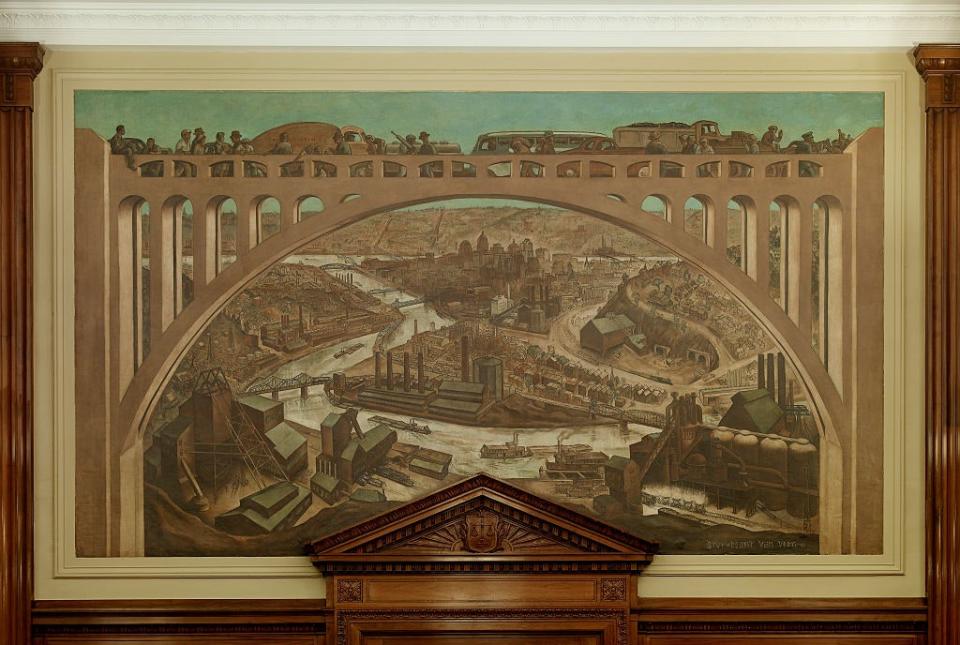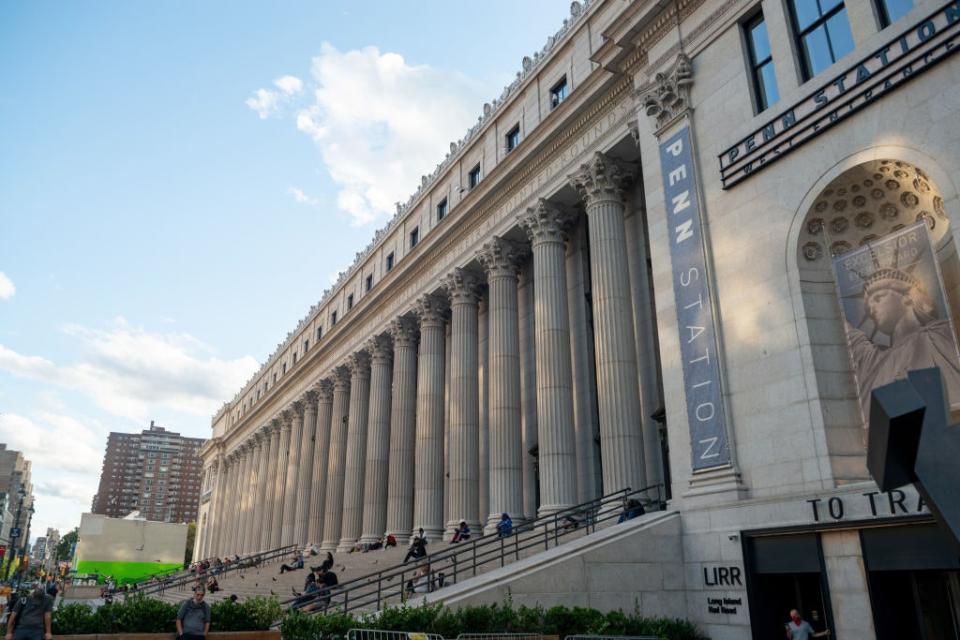Why Saving the USPS Means Saving Iconic American Art
In 1938, when artist Ben Shahn and his wife, Bernarda Bryson Shahn, were at work on a sprawling egg-tempera mural inside the Bronx General Post Office, she said that they joked, “We raised the price on all the eggs in New York.” It was, indeed, a hulking commission—13 panels inspired by Walt Whitman lines about laborers—and it was just one of more than 1,200 pieces that artists completed for post offices throughout the United States in the 1930s and ’40s through the New Deal.
As the U.S. Postal Service comes under attack from President Donald Trump and faces cuts from the newly installed postmaster general, its vast cultural legacy has never been more important. The agency has not only provided affordable communication for centuries, it facilitated elections and offered fairly paid employment for millions, particularly for Black Americans.
The USPS has helped shape our national identity by bringing art and architecture to every part of the country. Its vast art holdings exemplify the vitality of public goods and spaces.

Pittsburgh panorama at U.S. Courthouse and Post Office, Pittsburgh, Pennsylvania
Pursuing programs to employ artists, President Franklin Roosevelt spoke of creating art that would be “native, human, eager and alive,” Winifred Gallagher writes in his 2016 history, How the Post Office Created America. Among the hundreds that took up that cause were now-canonical figures like Philip Guston (in Commerce, Georgia), Milton Avery (Rockville, Indiana), and Archibald Motley (Wood River, Illinois).
The murals amount to a “historical record of a national experiment that was partly meant to reassert ideal regional values being threatened by the despair brought on by the Great Depression,” said Phil Parisi, a retired journal editor in Logan, Utah, who wrote a book on Texas’s post-office murals.
In many cases, the artists in the ’30s and ’40s were delivering work to places that were far from any art museum. “The only trouble with the pictures is that they are so good they call for more of the same,” a local paper in Marlinton, West Virginia, bemoaned of freshly unveiled murals, as Devin Leonard notes in his 2016 history of the USPS, Neither Snow Nor Rain.
The arrival of a Post Office building was often a seismic event in a small town. When the federal government put one, for example, in Walterboro, South Carolina, about an hour by car from Charleston, it was “the first new building that they had had in their lifetime,” an innkeeper reported, according to art historian Karal Ann Marling in her book on the murals, Wall-to-Wall America.

Re-opening Continues Across Densely Populated New York And New Jersey Areas
These buildings became busy town meeting places. They were prized by their constituents. “They’re amongst the most beautiful buildings built anywhere by anybody in the 1930s,” said Marling, who lives in Rochester, New York. They’re often “small, brick buildings with a center entrance,” she said, inspired to some degree by President Roosevelt’s own intense interest, and personal tastes, in architecture. It was seen as “a gift from the government,” she went on. “It was a sign that their president cared about them.”
In the decades since the Great Depression, some murals have been lost or destroyed because of renovations or natural disasters. Some offices have been sold off, and the works have been relocated.
If the USPS follows through on the branch closures it is now studying, careful oversight will be essential to preserving murals as well as historic structures. “There are so many murals that desperately need restoration,” said Evan Kalish, an enthusiast and self-described “perennial road-tripper”—he’s visited more than 10,000 post offices across the nation. For Kalish, who lives in Queens, New York, the mural program amounts to “a museum with 2,000 locations.”
In an April study, the Americans for the Arts reported that a staggering two-thirds of artists were unemployed. Perhaps USPS art restoration is an exciting opportunity to put them to work. They could be involved in repairing and enlivening post offices with new murals and other forms of art. This can also deliver a measure of justice: While the New Deal mural program almost entirely tapped white men, a new initiative could embolden a diverse array of Americans to create a new and lasting cultural legacy.
Originally Appeared on Architectural Digest

